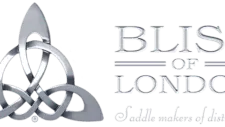The Confident Horse
What is confidence?
For riders, confidence is about knowing what might happen next. Does our horse understand and obey our cues? If something unexpected happens, will our horse spook or bolt?
Of course, we can never be 100% sure of what our horse will do, but if we have trained them ourselves, then we will have a much clearer idea of the possibilities and outcomes.
For horses, it’s much the same. The horse wants to know whenever they find the correct answer to our requests, the pressure will be released, because their rider is predictable and consistent, and the patterns that have been established will continue to provide reward and release of pressure.
So, why do horses lose confidence and become anxious?
The biggest reason is a lack of consistency, when:
- The horse gets surprised by cues,
- Isn’t working in the Engagement Zone (their attention is elsewhere),
- Has poor, but well-established, patterns of behaviour set up,
- Has been subjected to positive punishment (either intentionally or unintentionally, as the result of poorly timed negative reinforcement),
- Has been chased (again intentionally or unintentionally in the round yard or at liberty), or
- Has been successful in obtaining a release of pressure by offering a flight response.
Knowing this, how can we tell if a horse is indeed confident or lacking confidence?
A confident horse lacks anxiety, is relaxed and calm, appears keen to come in to work and makes it easy for you to feel all of these things.
Consistency
Taking responsibility for your horse’s welfare encompasses their training. By training your horse yourself, you will automatically build their confidence.
Of course, you need to be consistent with your training. By this, you don't need to train your horse every day or even every week. Horses have excellent memories for well-learned lessons and a recent study conducted suggested working a horse regularly did not improve learning efficiency. This means horses in regular work are not necessarily learning any faster than those rarely worked.
That’s worth remembering, because people often think they have to ‘start at the beginning’ when a horse has been out of work for an extended period and this may not be further from the truth.
Rather than approaching it as starting from the beginning, think about it as giving the horse a quick refresher course – perhaps your first lesson or two, and then continuing on from where you left off. Obviously remain mindful of your horse’s physical fitness level and ability to concentrate after a lengthy spell.
Probably the most important aspect of training is to have the horse relaxed and engaged with you.
Timing
We talk about pressure-release, but when do you release? The quicker your release, the faster your horse will learn.
With trailer loading, for example, as soon as you see the foot begin to move forward, stop tapping and reward the horse. Sometimes, and especially in the first attempts, you can even release on the ‘thought of forward movement’, when you see the horse moving their weight forward when asked.
This is called ‘shaping’. It involves rewarding an approximation of the behaviour. In the trailer loading example, moving the weight forward, but not the feet, in order to make the request really clear for the horse.
Once the horse learns where the release comes from, you can begin working on increasing the level of the response.
One of the best lessons for you to teach when you want to improve and practice your timing is ‘Give to the Bit’.
This lesson starts on the ground and, because you’re only asking for a small movement to begin with, the horse gets many of releases and a lot of praise, making it fun, plus you get tons of opportunities to practice your timing!
Pressure
One of the most common questions asked is: “How much pressure should I use [to reward my horse]?”
There’s no single answer to this, because it will depend on your horse, their history, whether or not they’ve been habituated to pressure, whether they’re relaxed or anxious, and many other factors, including their education and previous experience with the application of negative reinforcement.
However, you horse will tell you! Pressure is your motivator, which means you will require as much pressure as it takes to motivate your horse to make the movement you are requesting.
With some horses, all you will need to do is raise the whip in the direction of the hindquarter, and the horse will start moving and looking for answers. If, with this horse, you then went on to tap the hip, their emotional level would likely increase well above The Engagement Zone (the optimum learning state) – and that would be too much pressure.
Another horse may be desensitised to the whip and require tapping on the hip and, if that didn’t produce a response, perhaps tapping a little faster will.
Remaining mindful of the horse’s emotional level the first few times you apply pressure will tell you the baseline amount required to motivate your horse.
The thing to remember is the horse is learning a pattern, so the pressure itself is not nearly as important as the timing of the release, which must be immediately the behaviour is performed.
With each request, as the pattern establishes in your horse’s mind, you should require less and less pressure to get the same result.
Breaking it down
Breaking it down means knowing what you’re going to teach, each individual step and having a lesson plan.
If your horse starts to get anxious, take them back to something they know and reward that behaviour. Make a big fuss, with lots of scratches and telling them how clever they are.
Often, when we’re concentrating on getting something right, be it a flying change or just riding a 20 metre circle, we hold our breath, tense up and completely forget to praise the horse.
That’s why the scratch on the wither as a reward is good. When working on flying changes later, you can reach down and scratch your horse, but but you can’t pop a carrot in his mouth.
When you do reach down, you are still holding the rein but, because you have moved your hand, the horse gets an automatic release of pressure. The movement also relaxes you, the rider, as you remember it is the horse that is learning and you want him to be relaxed too.
Relaxation
Relaxation is paramount. It is essential the horse is relaxed before, during and after the lesson to optimise training.
A nervous or anxious horse is unlikely to be learning the things you are teaching. A further problem with the anxious horse is one possible response to anxiety is flight. If the horse successfully manages to release pressure by escaping with flight, they then learn an incorrect response.
SOURCE: Horses & People




